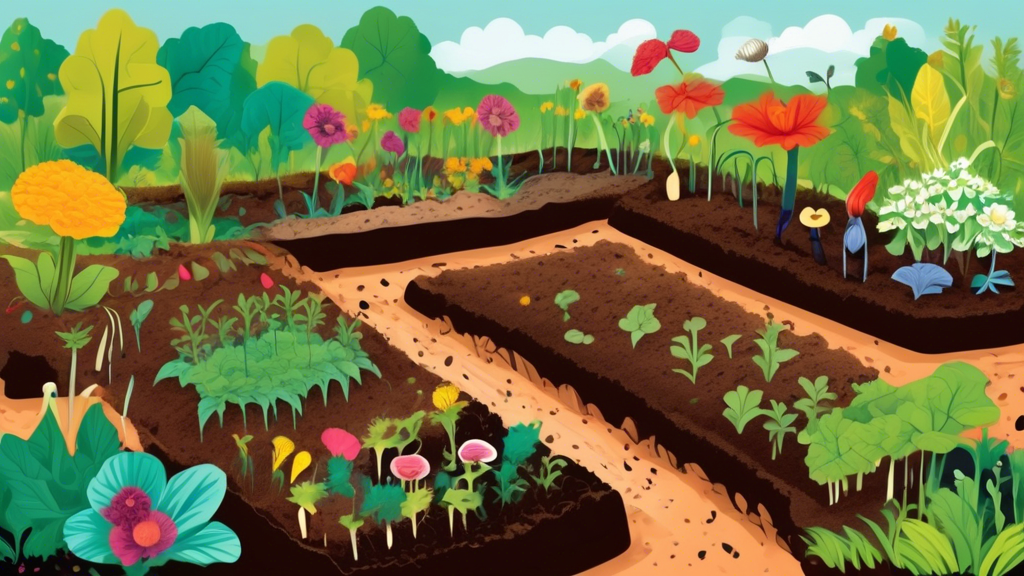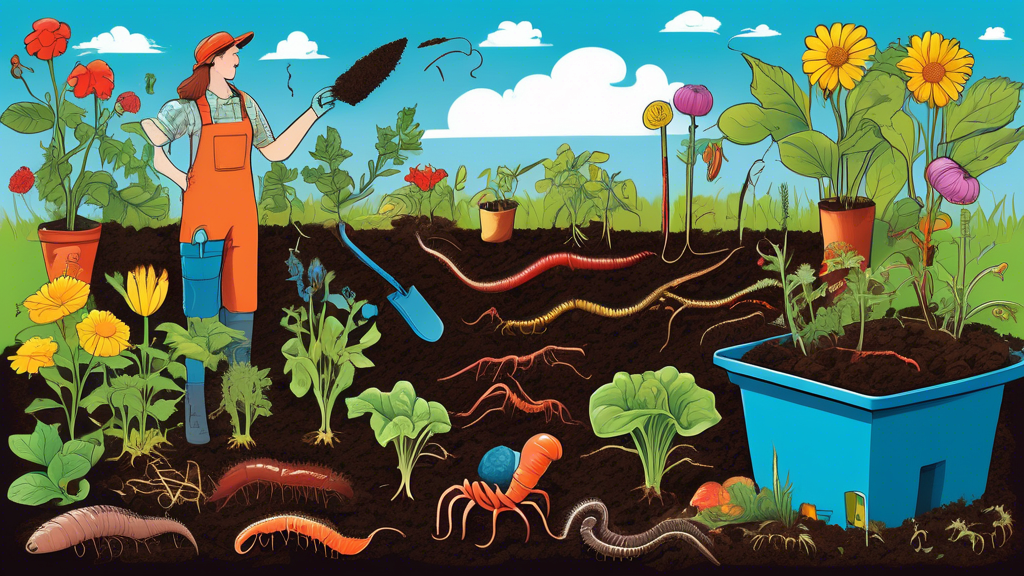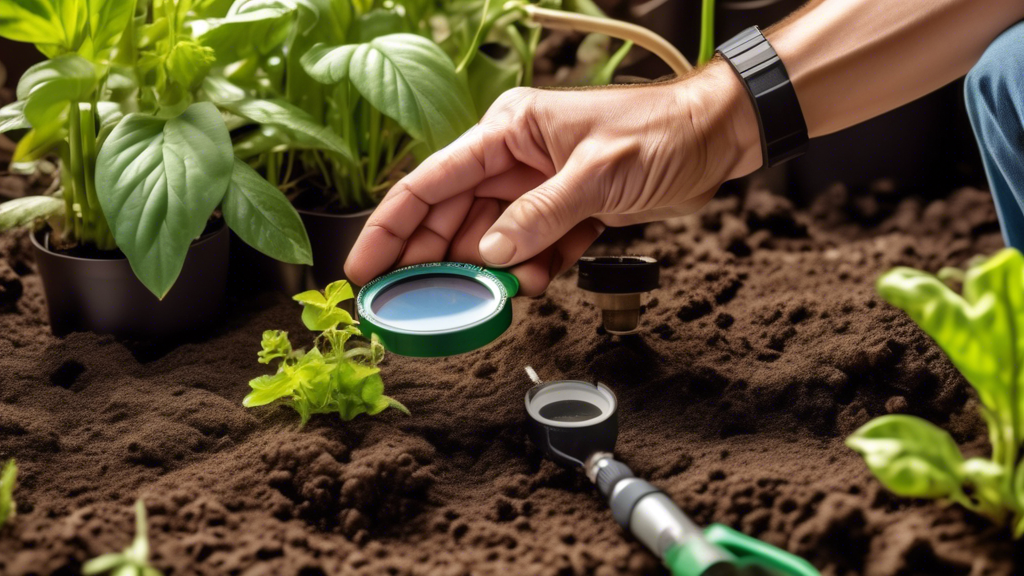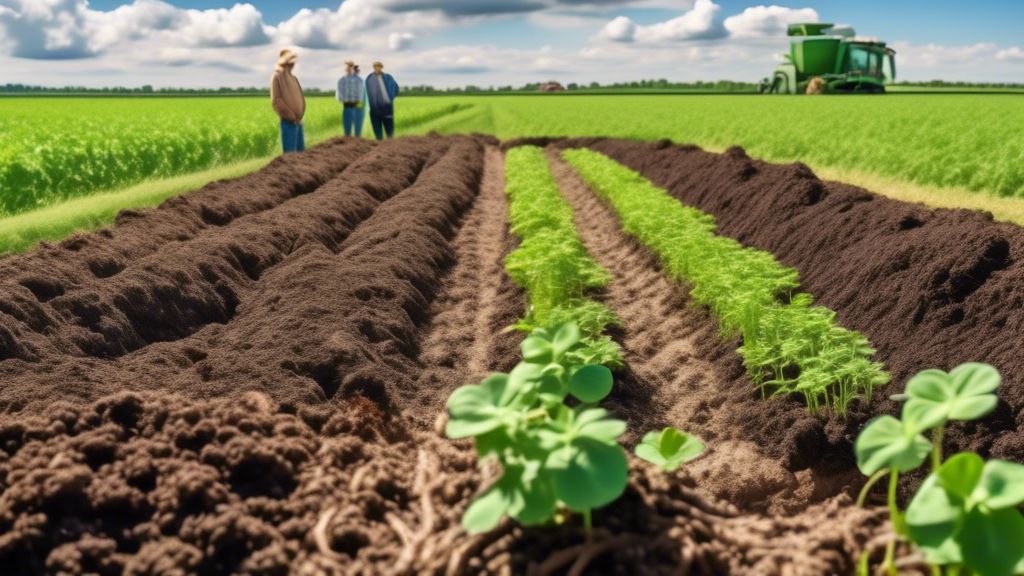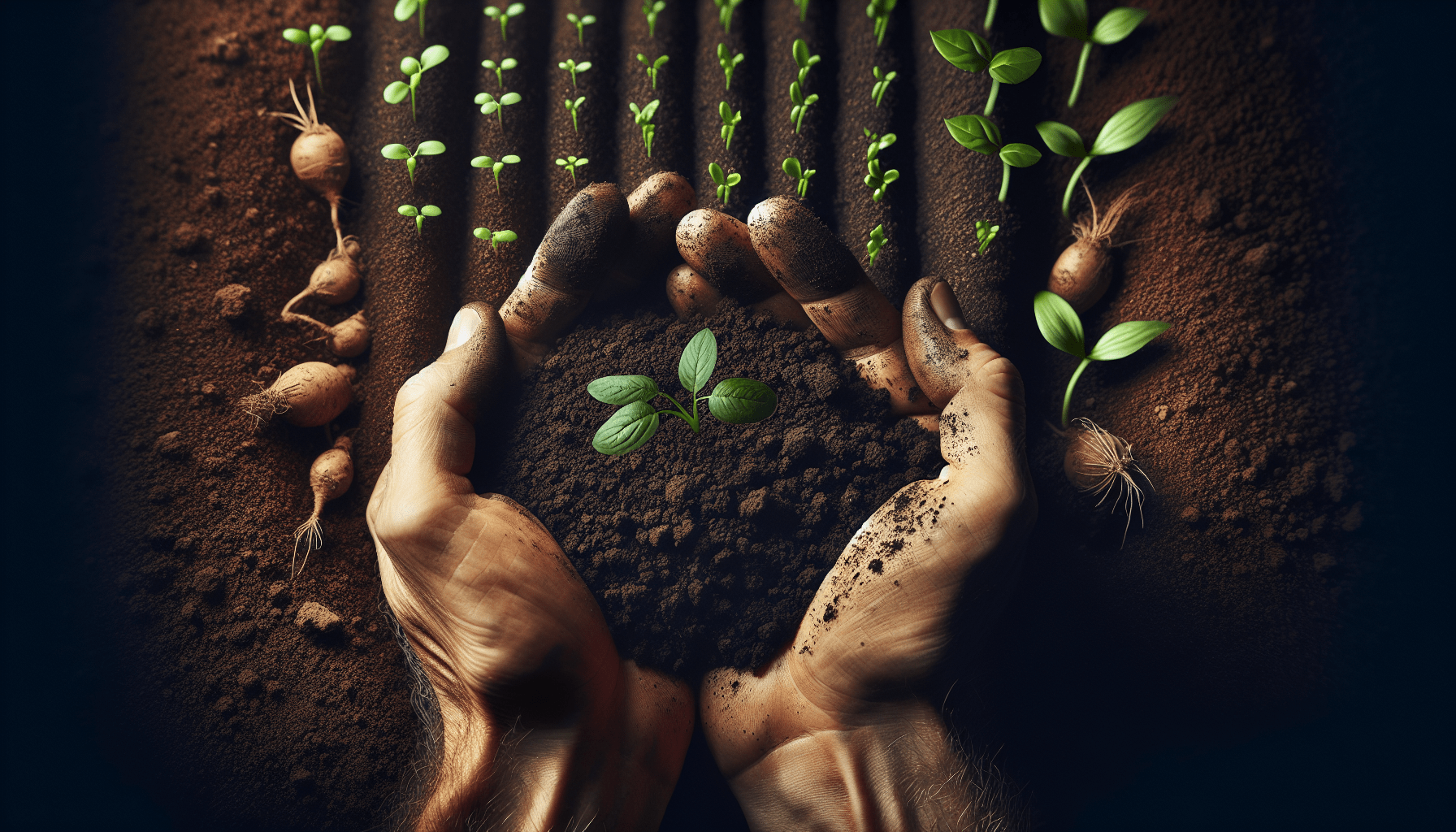
In the article “The Importance of Soil Health for Sustainable Agriculture,” you’ll explore the vital role that healthy soil plays in maintaining a sustainable farming ecosystem. As you dive into the subject, you’ll uncover how the foundation of robust agricultural practices lies in understanding and nurturing the soil. By keeping the soil rich in nutrients and maintaining its structure, farmers can achieve higher crop yields and contribute to environmental conservation. Discover practical tips on soil management, techniques to promote biodiversity, and how healthy soil can combat climate change. This concise guide will equip you with essential knowledge to foster sustainable agriculture. Have you ever stopped to think about the ground beneath your feet and its role in the food you eat? It’s easy to overlook soil when we are surrounded by modern conveniences, yet it is at the heart of sustainable agriculture. Soil health is paramount, influencing crop yields, water retention, and even climate regulation. Let’s delve into the importance of soil health for sustainable agriculture and explore how maintaining it can benefit us all.
What is Soil Health?
Soil health refers to the soil’s ability to function as a living ecosystem that sustains plants, animals, and humans. Healthy soil is teeming with life, from microorganisms to earthworms, each playing a vital role in nutrient cycling, water filtration, and root growth.
Components of Soil Health
- Biological Activity: The life in the soil, including bacteria, fungi, and other organisms, helps break down organic matter and make nutrients available to plants.
- Chemical Composition: The balance of nutrients like nitrogen, potassium, and phosphorus is crucial for plant growth.
- Physical Structure: Good soil has a mix of sand, silt, and clay, providing adequate air and water flow for plant roots.
These components work in harmony to create a thriving environment for crops.
Why is Soil Health Important?
Soil health is a cornerstone of sustainable agriculture for various reasons. It impacts everything from food production to the environment.
Boosting Crop Yields
Healthy soil leads to robust crops. Nutrient-rich soil supports stronger plants, leading to better yields and more resistance to pests and diseases. Farmers with healthy soil can produce more food on the same amount of land, contributing to food security.
Water Management
Soil with good structure can absorb and retain water more efficiently. This property reduces runoff and erosion, helping to maintain water quality in nearby rivers and lakes. It also means plants can draw on stored water during dry spells, making farms more resilient to climate stress.
Carbon Sequestration
Healthy soils can capture carbon dioxide from the atmosphere and store it as organic carbon, mitigating climate change. This process, known as carbon sequestration, highlights soil conservation’s environmental benefits beyond agriculture.
Practices for Maintaining Soil Health
Maintaining soil health requires a combination of techniques aimed at preserving its biological, chemical, and physical qualities. Here are some effective practices:
Crop Rotation
Rotating different types of crops helps prevent nutrient depletion and disrupts pest and disease cycles. For example, alternating legumes with cereals can fix nitrogen in the soil, enhancing fertility.
Cover Cropping
Cover crops like clover or rye protect the soil from erosion, improve soil structure, and add organic matter. These crops are grown during off-seasons when the main crops are not being cultivated.
Reduced Tillage
Minimizing tillage helps maintain soil structure and reduces the disturbance of soil organisms. This practice can also decrease erosion and improve water retention.
Organic Amendments
Adding compost or manure enriches the soil with nutrients and organic matter. These amendments improve soil structure, increase microbial activity, and enhance moisture retention.
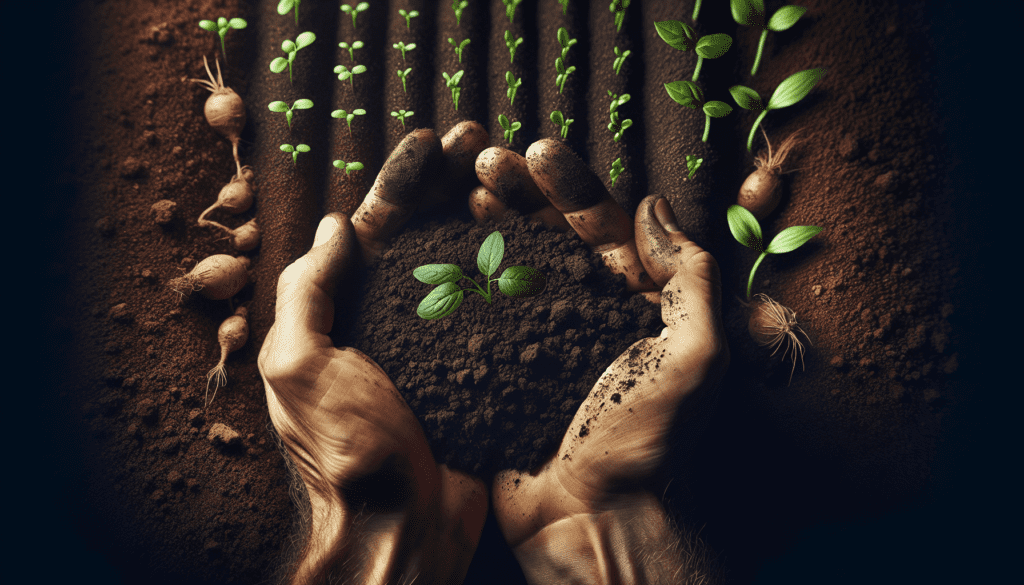
Challenges to Soil Health
Maintaining soil health is not without its challenges. Modern agriculture, with its focus on high yields, often leads to soil degradation. Here are some common issues:
Soil Erosion
Wind and water erosion can strip the topsoil, which contains most of the soil’s nutrients and organic matter. Erosion reduces soil fertility and can lead to water pollution.
Chemical Imbalance
Overuse of chemical fertilizers and pesticides can harm soil organisms and alter the nutrient balance. This can lead to a decline in soil health over time.
Compaction
Heavy machinery and continuous cropping can compact the soil, reducing its air and water permeability. Compacted soil is less hospitable to plant roots and soil organisms.
Loss of Organic Matter
Intensive farming practices can deplete the soil’s organic matter, crucial for maintaining soil structure and fertility. Without organic matter, soil becomes less productive and more prone to erosion.
Measuring Soil Health
To effectively manage soil health, it’s essential to measure it regularly. Soil tests can provide valuable information about nutrient levels, pH, and organic matter content. Farmers can use this data to make informed decisions about fertilization and other soil management practices.
Soil Testing Methods
- Nutrient Analysis: Determines the levels of essential nutrients in the soil and helps in deciding the type and amount of fertilizers needed.
- pH Testing: Measures soil acidity or alkalinity, which affects nutrient availability and microbial activity.
- Soil Organic Matter: A crucial indicator of soil fertility, as it influences nutrient availability and water retention.
Interpreting Soil Test Results
Soil test results can be a bit complex. Here’s a simplified table to help you understand what the common measures mean:
| Parameter | Ideal Range | Interpretation |
|---|---|---|
| pH | 6.0 – 7.5 | Neutral range suitable for most crops. |
| Organic Matter (%) | 3 – 6 | High values indicate good soil health. |
| Nitrogen (ppm) | 20 – 40 | Essential for leafy growth. |
| Phosphorus (ppm) | 10 – 20 | Key for root development and fruiting. |
| Potassium (ppm) | 100 – 150 | Important for overall plant health. |
Actions Based on Results
Based on soil test results, farmers can adjust their practices to enhance soil health. For example, if the pH is too low (acidic), lime can be added to raise it. Conversely, if it’s too high (alkaline), sulfur may be used to lower it. Adding compost or other organic matter can help increase organic matter content and improve overall soil health.
The Role of Technology in Soil Health
In today’s digital age, technology is playing an increasingly important role in maintaining soil health. Advancements in tools and techniques offer new ways to monitor and improve soil conditions.
Precision Agriculture
Precision agriculture uses GPS and data analytics to apply fertilizers and other inputs precisely where they are needed. This method reduces waste and ensures that plants get the nutrients they require without overloading the soil.
Soil Sensors
Soil sensors can provide real-time data on moisture, temperature, and nutrient levels. Farmers can use this information to make timely decisions about irrigation and fertilization, improving efficiency and soil health.
Drones and Satellites
Drones and satellites can monitor large areas of farmland, providing detailed images and data. This technology helps identify areas of poor soil health and guides targeted interventions.
Policy and Soil Health
Public policies can support soil health by promoting sustainable agricultural practices. Governments and organizations can offer incentives and resources to help farmers adopt soil-friendly techniques.
Subsidies and Financial Incentives
Financial incentives for practices like cover cropping, reduced tillage, and organic farming can encourage farmers to prioritize soil health.
Research and Education
Investing in research and education is crucial for advancing soil health. Training programs and resources can help farmers stay informed about the latest practices and technologies.
Regulations and Standards
Implementing regulations and standards for soil management can ensure that all farmers follow practices that protect and enhance soil health. These may include limits on chemical use and requirements for erosion control.
Global Perspectives on Soil Health
Soil health is a global issue, affecting food security and environmental sustainability worldwide. Different regions face unique challenges and opportunities in managing soil health.
Developing Countries
In developing countries, soil degradation is often linked to poverty and lack of resources. Initiatives focused on education, sustainable practices, and community engagement can make a significant difference.
Developed Countries
In developed countries, the challenge often lies in balancing intensive agriculture with soil conservation. Innovative technologies and policy measures can help strike this balance.
International Collaboration
Global collaboration and knowledge-sharing are vital for addressing soil health challenges. Organizations like the Food and Agriculture Organization (FAO) work to promote sustainable soil management practices worldwide.
Actions You Can Take
Whether you’re a farmer, gardener, or simply someone who cares about the planet, there are steps you can take to support soil health.
Support Sustainable Products
Buying products from farmers and companies that prioritize sustainable practices can create market demand for soil-friendly farming.
Composting
Composting kitchen scraps and yard waste can add valuable organic matter to the soil, whether in your garden or through community composting programs.
Educate and Advocate
Spreading awareness about the importance of soil health and advocating for supportive policies can help drive positive change.
Conclusion
Soil health is the bedrock of sustainable agriculture. It influences crop yields, water management, and climate regulation, making it crucial for food security and environmental sustainability. By adopting practices that enhance soil health, using technology wisely, and supporting policies that promote sustainable farming, we can ensure that our soils remain fertile and productive for generations to come.
So the next time you enjoy a meal, take a moment to appreciate the healthy soil that made it possible. Your actions, no matter how small, can make a significant impact on maintaining the vitality of our soils and the well-being of our planet.


